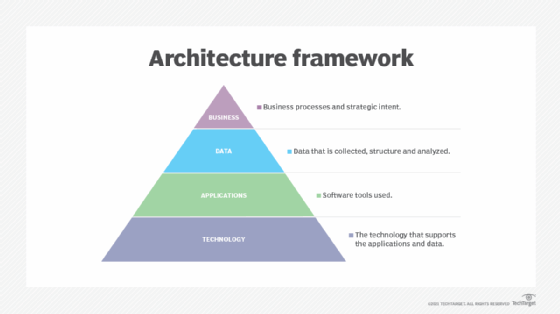Introduction
Enterprise architecture plays a crucial role in change management within organizations. It provides a holistic view of the organization's IT landscape, enabling effective decision-making and alignment with business goals. In this article, we will explore the significance of enterprise architecture in change management and how it contributes to successful organizational transformations.
The Importance of Enterprise Architecture in Change Management
Change is inevitable in today's dynamic business environment. Organizations constantly face the need to adapt to market trends, technological advancements, and evolving customer demands. However, implementing changes without a well-defined Home page plan can lead to chaos and disruption. This is where enterprise architecture comes into play.
The Role of Enterprise Architecture
Enterprise architecture serves as a blueprint that aligns an organization's business strategy with its IT infrastructure. It provides a framework for managing complex systems, applications, data, and processes. In the context of change management, enterprise architecture helps organizations navigate through transitions smoothly by:
Providing a Clear Vision: Enterprise architecture defines the desired state of the organization's IT landscape, taking into account business objectives and requirements for change initiatives.

Ensuring Alignment: By mapping current capabilities and identifying gaps, enterprise architecture ensures that proposed changes are aligned with the organization's overall goals and objectives.
Managing Complexity: Change initiatives often involve multiple systems, applications, and stakeholders. Enterprise architecture helps manage this complexity by providing a comprehensive view of dependencies, impacts, and risks.
Enabling Effective Decision-Making: With enterprise architecture, decision-makers have access to accurate and up-to-date information about the organization's IT assets. This enables informed decision-making during change initiatives.
Minimizing Risks: By identifying potential risks and challenges early on, enterprise architecture allows organizations to proactively address them before they become major roadblocks to successful change implementation.
The Benefits of Using Enterprise Architecture Tools
To effectively leverage enterprise architecture in change management, organizations can utilize specialized tools that facilitate the planning, analysis, and execution of change initiatives. These tools offer several benefits:
Improved Collaboration: Enterprise architecture tools provide a centralized platform for collaboration among stakeholders involved in change management. This ensures seamless communication and coordination throughout the change process.
Enhanced Visualization: Visual representations of the organization's IT landscape, such as diagrams and interactive models, help stakeholders understand the complexities of proposed changes and make informed decisions.
Efficient Resource Allocation: Enterprise architecture tools enable organizations to optimize resource allocation by identifying redundancies, gaps, and areas of improvement within the IT infrastructure.
Accelerated Change Implementation: By streamlining processes and automating repetitive tasks, enterprise architecture tools expedite the implementation of change initiatives, reducing time-to-market.
Solution Architecture Management
Solution architecture management is an essential aspect of enterprise architecture in change management. It focuses on designing and implementing practical solutions to address specific business needs or problems. A solution architect plays a pivotal role in this process by:
Understanding Business Requirements: The solution architect works closely with stakeholders to understand their requirements and translate them into technical solutions.

Designing Solutions: Based on the identified needs, the solution architect designs comprehensive solutions that align with the organization's overall enterprise architecture.
Collaborating with Stakeholders: Throughout the change process, the solution architect collaborates with various stakeholders to ensure that the implemented solutions meet their expectations.
Enabling Integration: Solution architects facilitate the integration of new solutions into existing systems by identifying dependencies, conducting impact assessments, and implementing necessary changes.
Application Portfolio Management
Application portfolio management (APM) is another crucial component of enterprise architecture in change management. It involves managing an organization's portfolio of applications to ensure they align with business objectives and support effective change implementation. ServiceNow offers robust APM tools that enable organizations to streamline their application portfolio management process.
ServiceNow Application Portfolio Management
follow this linkServiceNow's APM tools provide organizations with a unified platform to manage their application portfolios effectively. These tools offer the following features:
Application Rationalization: ServiceNow APM tools help organizations assess the value, cost, and risk of each application in their portfolio. This enables informed decision-making regarding application retirement, consolidation, or modernization.
Application Dependency Mapping: By mapping dependencies between applications, ServiceNow APM tools identify potential impacts of proposed changes and facilitate effective change planning.
Lifecycle Management: ServiceNow APM tools enable organizations to track the lifecycle of each application, from development to retirement. This ensures proactive management and reduces the risk of outdated or unsupported applications.
Risk Assessment: Through comprehensive risk assessments, ServiceNow APM tools help organizations identify potential vulnerabilities and prioritize mitigation efforts during change initiatives.
FAQs (Frequently Asked Questions)
Q: How does enterprise architecture contribute to successful change management?- A: Enterprise architecture provides a holistic view of an organization's IT landscape, enabling effective decision-making, managing complexity, and minimizing risks during change initiatives.
- A: Solution architects design and implement practical solutions to address specific business needs or problems during change initiatives. They collaborate with stakeholders, ensure alignment with enterprise architecture, and facilitate integration.
- A: Application portfolio management involves managing an organization's portfolio of applications to ensure they align with business objectives and support effective change implementation.
- A: ServiceNow APM tools provide a unified platform for application rationalization, dependency mapping, lifecycle management, and risk assessment. This streamlines the application portfolio management process and enhances decision-making during change initiatives.
- A: Risks can significantly impact the success of change initiatives. By proactively identifying and addressing potential risks, organizations can mitigate disruptions and ensure smooth change implementation.
- A: Enterprise architecture tools provide a centralized platform for communication, document sharing, and version control. This fosters collaboration among stakeholders involved in change management.
Conclusion
Enterprise architecture plays a vital role in change management by providing a clear vision, ensuring alignment, managing complexity, enabling effective decision-making, and minimizing risks. Solution architecture and application portfolio management are essential components of enterprise architecture that contribute to successful change implementation. ServiceNow offers robust tools for solution architecture management and application portfolio management, enabling organizations to streamline their change processes. By leveraging enterprise architecture principles and utilizing specialized tools, organizations can navigate through complex changes with ease and achieve their desired outcomes.